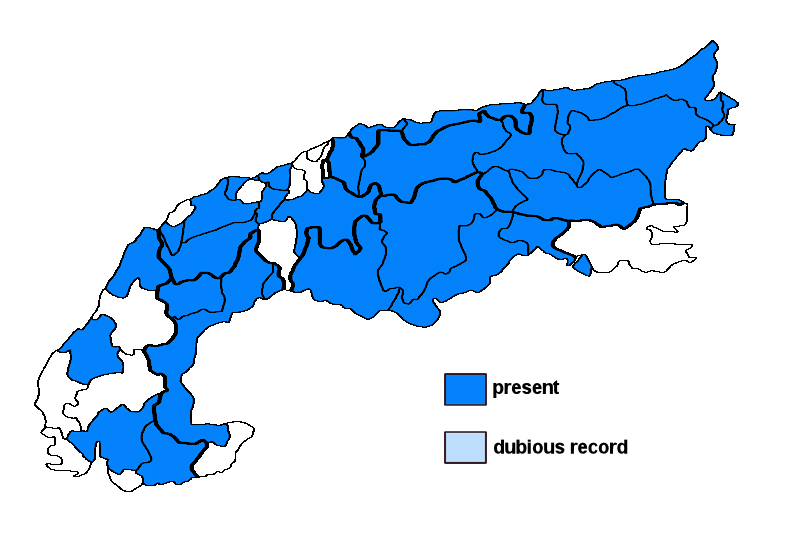Cladonia ochrochlora Flörke
Syn.: Cladonia fimbriata (L.) Fr. var. ochrochlora (Flörke) Schaer., Cladonia furcata (Huds.) Schrad. var. notabilis Müll. Arg., Cladonia lepidula Kremp., Cladonia ochrochlora Flörke var. pycnotheliza (Nyl.) Harm., Cladonia ochrochlora Flörke var. spadicea Müll. Arg., Cladonia pergracilis Kremp.
Lichenised.
Substrate: bark, lignum, plant debris, acidic soil (mostly on siliceous substrata)
Altitudinal range: from the submediterranean/colline belt (potential vegetation: mixed deciduous forests dominated by Quercus and Carpinus) to the subalpine belt (potential vegetation: open, taiga-like forests dominated by Larix decidua and/or Pinus cembra and Rhododendron)
Note: very similar to C. coniocraea, but with podetia corticated in the lower third and at the bottom of the often present scyphi; a mainly temperate species found on rotten wood and at the base of tree trunks in both deciduous and coniferous forests; in the Alps it ranges from the lowlands to the montane belt, and is rather common.
Austria: Vorarlberg; Tirol; Salzburg; Kärnten; Steiermark; Oberösterreich; Niederösterreich (incl. Wien); Burgenland; Germany: Oberbayern; Schwaben; Switzerland: Bern; Graubünden; Luzern; Schwyz; Uri; Vaud; Valais; France: Alpes-de-Haute-Provence; Alpes-Maritimes; Isère; Haute-Savoie; Italy: Friuli; Veneto; Trentino Alto Adige; Lombardia; Piemonte; Valle d'Aosta; Slovenia: Trnovsky Gozd;





